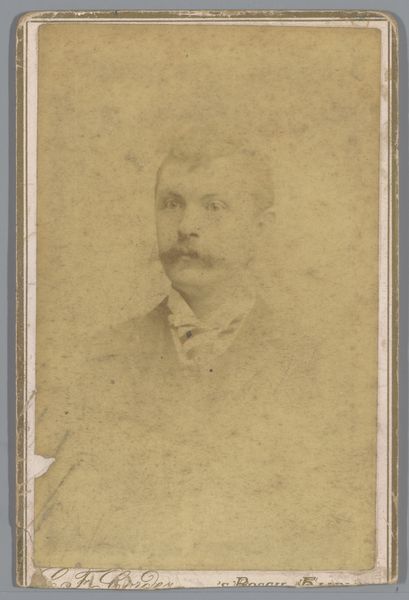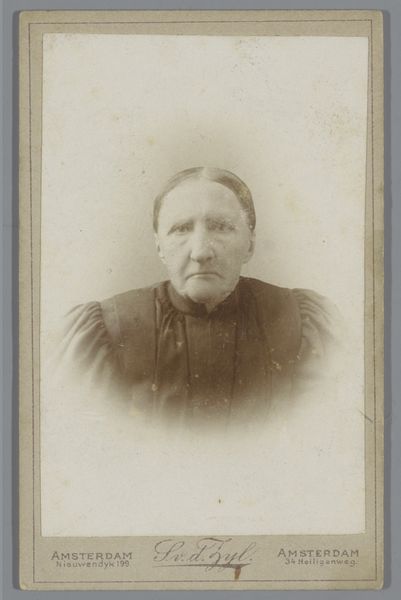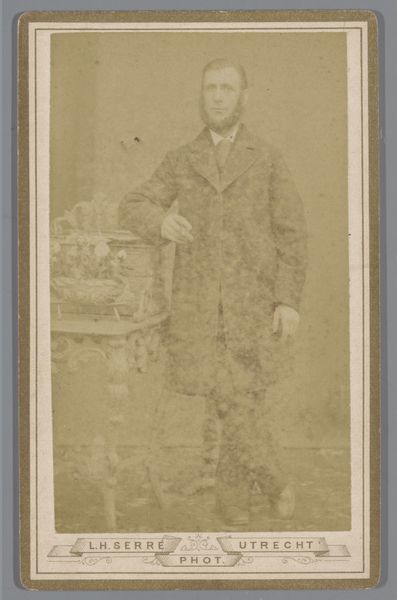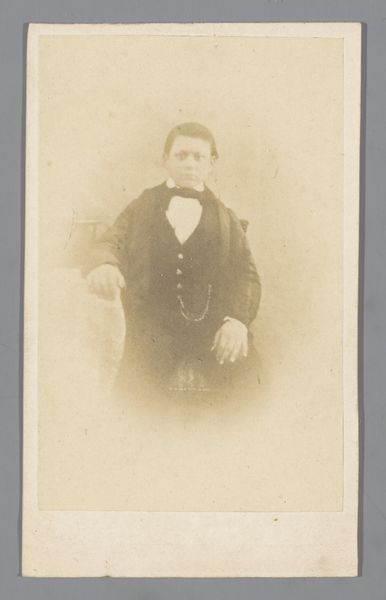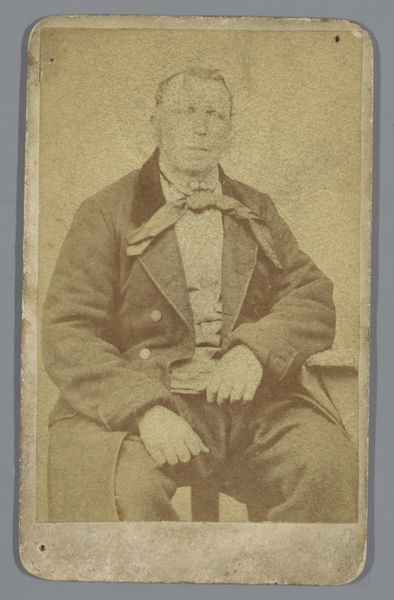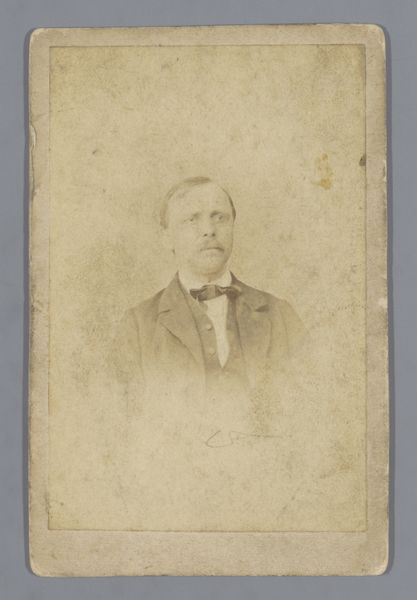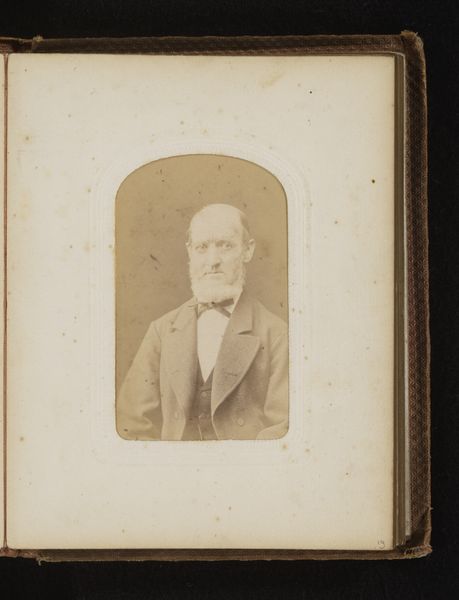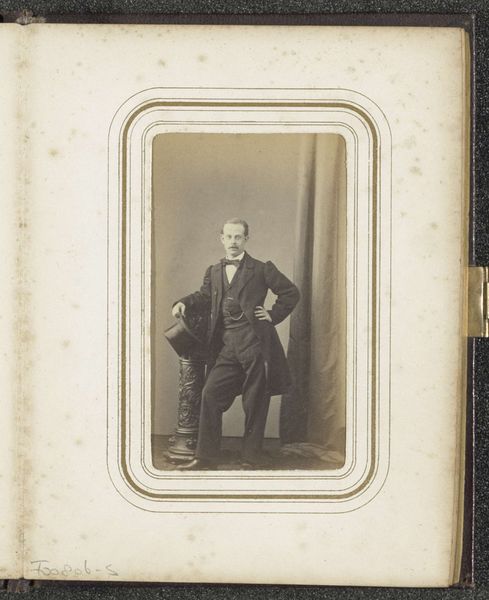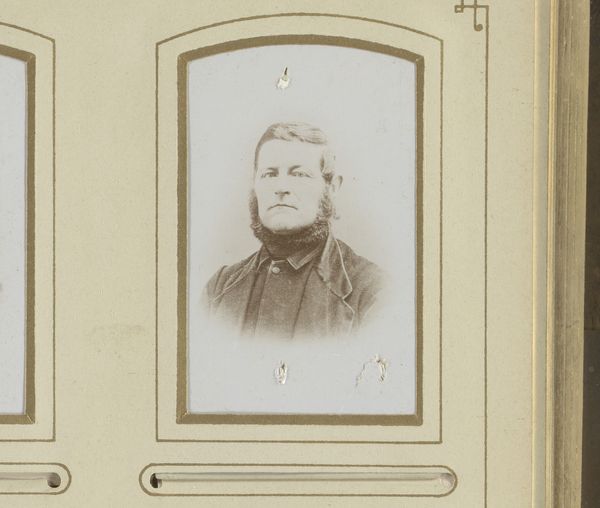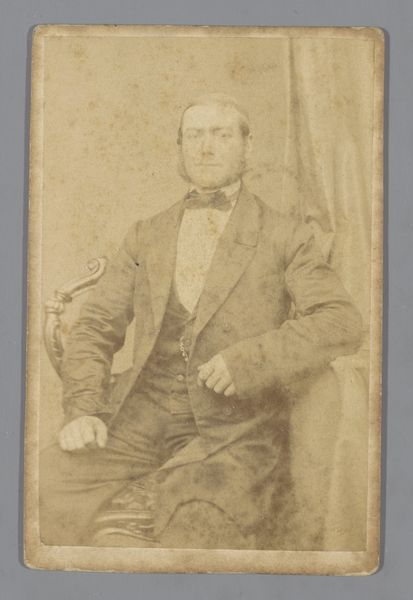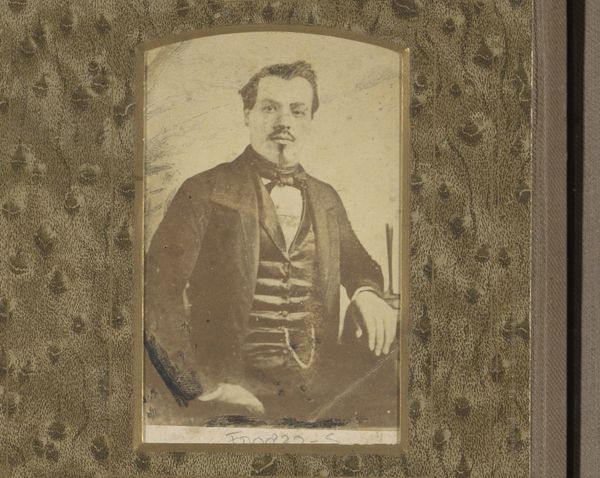
photography
#
photography
#
coloured pencil
#
realism
Dimensions: length 103 mm, width 63 mm
Copyright: Rijks Museum: Open Domain
Curator: Here we have an intriguing image titled "Portret van een onbekende man," created sometime between 1890 and 1918, attributed to J. Siewers & Zoon. It seems to primarily utilize photography. Editor: My first impression? Melancholy, almost sepia-toned, even though it's a black and white photo. The softness lends a certain dreamlike quality, like peering into a faded memory. Curator: Indeed. The soft focus almost seems to enshroud the sitter in a sense of mystery, which contributes to that impression. His identity, of course, remains unknown, leaving us to project our own narratives. What symbolic weight do you feel this carries? Editor: The very act of preserving a face, a presence, says something profound. Think of ancient death masks. It's about freezing a moment, fighting against oblivion. I imagine he was loved, that someone treasured this image, even if his name is lost to us. Look at his kind eyes, doesn’t that tell you everything? The small gestures become grand statements about our ephemeral existence. Curator: I agree. Consider, too, the context of late 19th and early 20th-century photography. The burgeoning middle class gained access to portraiture, and images became democratized ways to represent social identity. It provided lasting material evidence of a lived life. But how reliable are these pictures, in your view? Do they truly show the man, or an aspiration of the man? Editor: Oh, that’s the million-dollar question! Photography always lies a little. It flattens, it idealizes or demonizes through framing and light. But even with those limitations, there’s a core truth in the gaze of a person presented on film, the attempt at sincerity leaves a profound impression that tells so much even despite it’s material shortcomings. Curator: That's very insightful, considering his clothing too and presentation were obviously selected carefully and strategically. It reveals how consciously these presentations were constructed. The photograph’s purpose and symbolic intention often trumped its documentarian aspect. It reminds me of ancient Roman portraiture, where the flaws of individuals were edited out. Editor: Absolutely, and while we ponder about his identity, and symbolic presentation – let us remember the art, and emotional feeling created for us through his forgotten identity. Curator: Agreed, this exploration shows the power of a single image to evoke volumes of cultural memory. Editor: I see in it a mirror reflecting not just the past, but also our current longing for connection with those who came before.
Comments
No comments
Be the first to comment and join the conversation on the ultimate creative platform.
